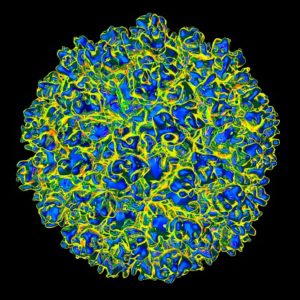Hepatitis E virus (HEV) is endemic in many resource-limited settings. HEV infection is usually asymptomatic; however, it can cause severe liver injury, especially in immunocompromised individuals. Although transfusion-transmission of HEV has been reported, the virus is usually transmitted via fecal-oral routes (genotypes 1 and 2), consumption of infected meat products, or contact with infected livestock (genotypes 3 and 4). Since infection rates are considered to be low in the United States and Canada, there are no recommendations or approved screening tests for donated blood. Researchers in Canada recently examined the prevalence of HEV among 13,993 blood donors. All donations were screened by PCR for HEV RNA, and a subset of 4102 donations were tested for anti-HEV antibody positivity. No PCR positive samples were identified (95% CI, 0.0%-0.03%), and seroprevalence for HEV was 5.9% (95% CI, 5.2%-6.6%). Since prevalence of HEV is low in Canada, increased surveillance of transfusion-transmission and blood community awareness of the risk may be the most powerful and cost-effective tool to monitor HEV.
Reference:1

